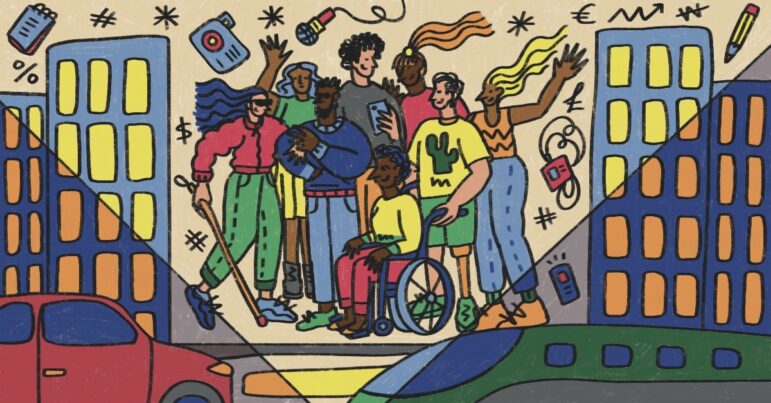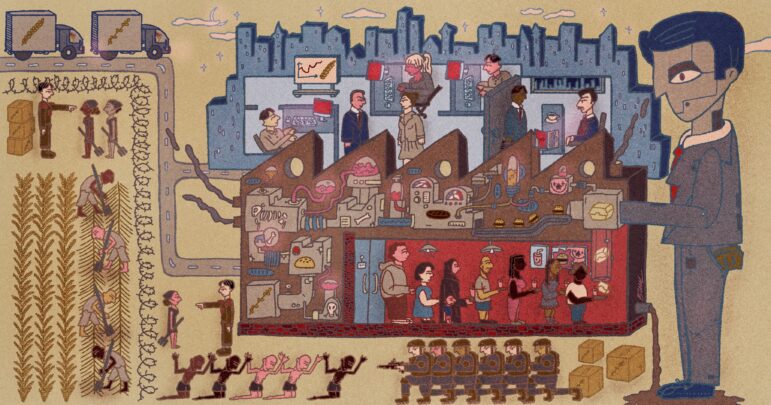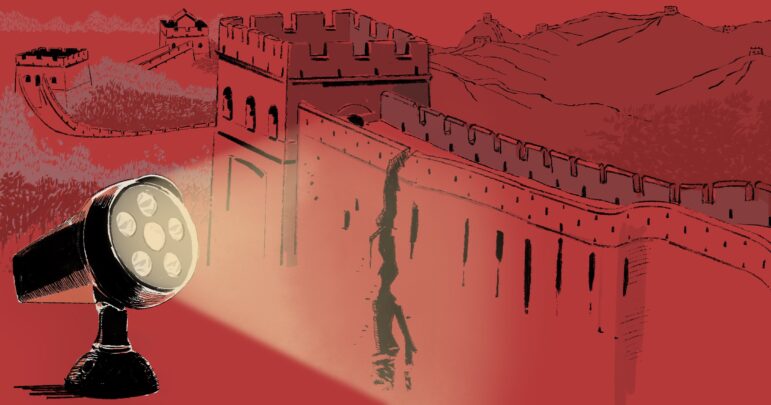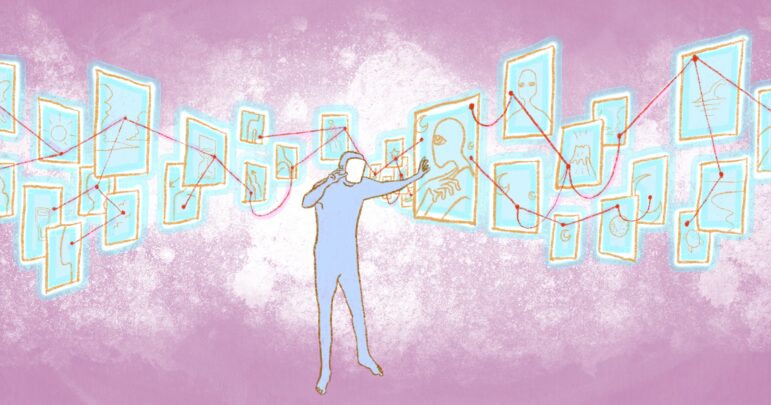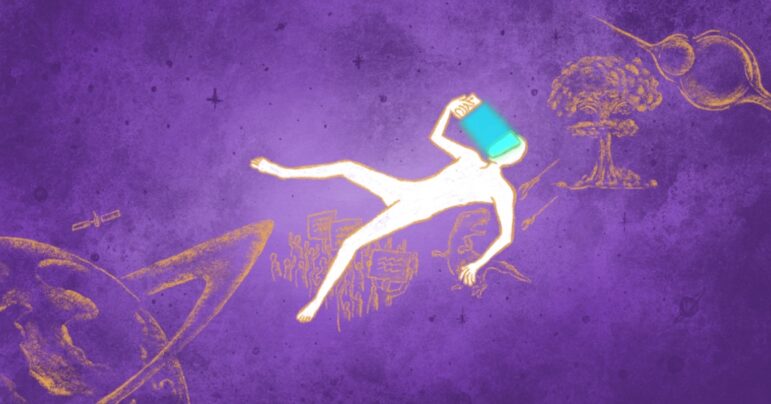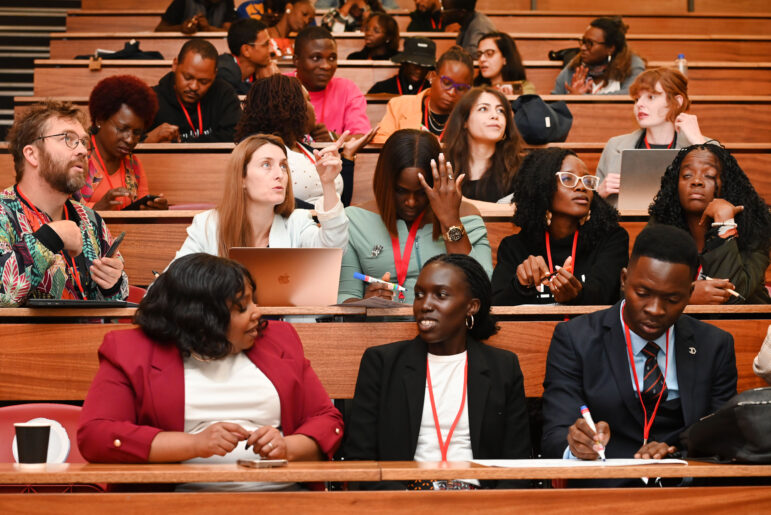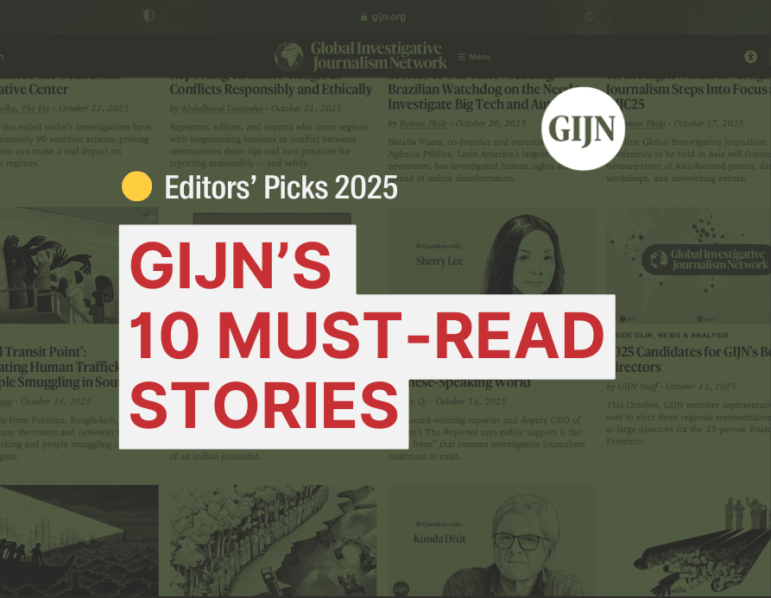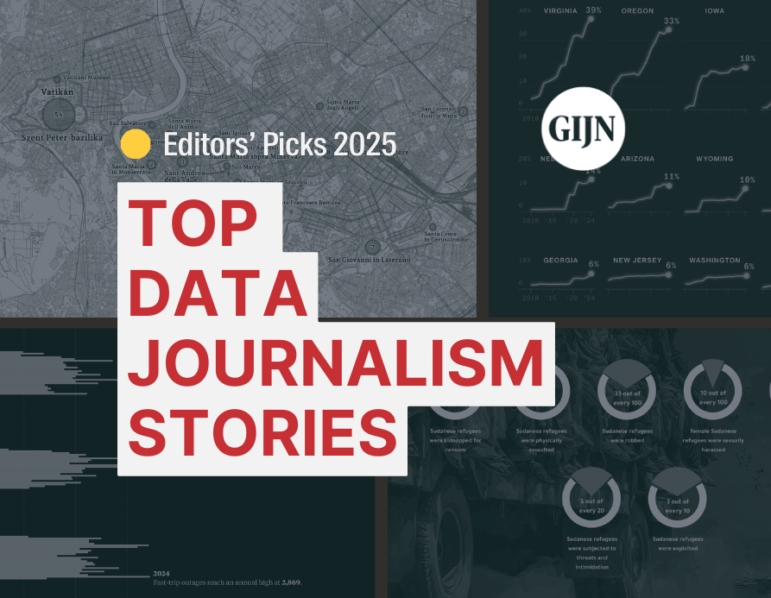

Illustration: Alexandra Ramirez for GIJN
Guide Resource
Reporting Guide to Investigating Disability Issues
Chapter Guide Resource
Guide to Investigating Disability Issues: Introduction
Chapter Guide Resource
Guide to Investigating Disability Issues: Chapter 1 — Understanding Disability
Chapter Guide Resource
Guide to Investigating Disability Issues: Chapter 2 — Key Issues and Story Topics
Chapter Guide Resource
Guide to Investigating Disability Issues: Chapter 3 — Sources and Data
Chapter Guide Resource
Guide to Investigating Disability Issues: Chapter 4 — Language and Interviewing
Chapter Guide Resource
Guide to Investigating Disability Issues: Chapter 5 — Case Studies
What is considered a disability? This is a difficult question to answer — because the definition can vary, depending on the region, country, or culture.
The World Health Organization (WHO) describes disability as part of being human, and provides perhaps the broadest definition:
“Disability results from the interaction between individuals with a health condition, such as cerebral palsy, Down syndrome and depression, with personal and environmental factors including negative attitudes, inaccessible transportation and public buildings, and limited social support.”
The US Centers for Disease Control (CDC) notes that disability can be defined as having three dimensions:
- Impairment in a person’s body structure or function, or mental functioning; examples of impairments include loss of a limb, loss of vision or memory loss.
- Activity limitation, such as difficulty seeing, hearing, walking, or problem solving.
- Participation restrictions in daily activities, such as working, engaging in social and recreational activities, and obtaining health care and preventive services.
The United Nations also offers a list of disability-related legislation by country. It is worth noting how recent some of these laws are, and the diversity of what they apply to or cover. When working on a story, check to see if your country’s laws have been updated as well as whether they are actually enforced.
Countries that have signed on to the UN Convention on the Rights of Persons with Disabilities (CRPD) recognize “that disability is an evolving concept and that disability results from the interaction between persons with impairments and attitudinal and environmental barriers that hinders their full and effective participation in society on an equal basis with others.”
Per the CDC, there are many types of disabilities, including those that affect:
- Vision
- Movement
- Thinking
- Remembering
- Learning
- Communicating
- Hearing
- Mental health
- Social relationships
Although this list is by no means exhaustive, the CDC explains that disability can be “related to conditions that are present at birth and may affect functions later in life, including cognition (memory, learning, and understanding), mobility (moving around in the environment), vision, hearing, behavior, and other areas.
These birth-related conditions may include:
- Single gene disorders (for example, Duchenne muscular dystrophy)
- Chromosomal disorders (for example, Down syndrome)
- Infections during a pregnancy (for example, rubella) or exposure to substances, such as alcohol or cigarettes, during a pregnancy
In addition, the CDC notes that disabilities can be associated with developmental conditions that arise as children grow older (for example, autism spectrum disorder and attention-deficit/hyperactivity disorder or ADHD). Other disabilities can be related to an accident or injury (for example, traumatic brain injury or spinal cord injury), a longstanding condition or illness (for example, diabetes), or they can be progressive (for example, muscular dystrophy), related to aging (like the loss of mobility or vision and hearing loss), static (for example, limb loss), or dynamic in nature (some forms of multiple sclerosis). Autism, ADHD, and dyslexia are also example of neurodivergence, where differences in the brain affect how people think and process information. Neurodivergent conditions are not, by definition, a disability, but they can be associated with it.
Other definitions come from national or regional bodies:
- In the UK, the 2010 Equality Act defines a disability as “a physical or mental impairment that has a substantial and long-term adverse effect on the person’s ability to carry out normal, day to day abilities.”
- In the Turkish Disability Act, a person with a disability is described as someone “who has difficulties in adapting to the social life and in meeting daily needs due to the loss of physical, mental, psychological, sensory, and social capabilities at various levels by birth or by any reason thereafter and who therefore needs protection, care, rehabilitation, consultancy and support services.”
- In Mongolia’s Law on the Human Rights of Persons with Disabilities 2016, persons with a disability are defined as “those who have physical, intellectual, mental and sensory impairments, which in interaction with various barriers; hinder them from fully and effectively participating in social lives.”
The European Union acknowledged in a June 2017 report that the EU has no universal definition of disability, and that definitions can vary from member state to member state, and even within those member states.
Models of Disability
Despite the official definitions, the disability community is not a monolith.
“First thing to keep in mind is that people with disabilities are individuals with complex problems and complex lives,” said Susan LoTempio, a retired journalist and advisory board member of the US National Center on Disability and Journalism (NCDJ). LoTempio, who had polio as a child and uses a wheelchair, has spent her career advocating for improvement in the way journalists cover disability and issues impacting the disability community.
LoTempio advises reporters not to “make sweeping assumptions about what people with disabilities need or want. And they shouldn’t allow (their) sources to get away with any assumptions.”
All of this underscores the necessity to educate yourself, challenge your own perceptions of disability, do your own work to have a basic understanding of disability, and then talk with a wide range of people — because the experiences of the disability community cannot be generalized.
The definition or view of disability can also vary greatly based on where or by whom it was created, such as in the medical community or by actual members of the disability community. It’s important to understand the gaps and differences between these perspectives and definitions, as they impact not only sources and the cultural attitudes journalists may encounter, but can also inform the direction of one’s reporting and guide your story ideas.
Medical, Social, and Other Models of Disability
The Models of Disability help us understand how disability is viewed or understood by different people. The models categorize different common perspectives on disability. People can have beliefs that fall within multiple models, as Prof. Rhoda Olkin shared in “Conceptualizing Disability: Three Models of Disability” for the American Psychological Association (APA). It’s important to understand these models, as they impact not only sources and the cultural attitudes journalists may encounter, but can also inform the direction of one’s reporting and guide your story ideas.
The Medical Model believes a person is disabled solely due to physical or mental “impairment” or condition. Often, the perspective of those who believe in the medical model is that in order to improve the lives of people with disabilities, they need to have treatments or cures that bring them closer to what is believed to be “typical” functioning.
As the University of Oregon’s Accessible Education Center explains, in the medical model, the “agent of remedy is the professional who affects the arrangements between the individual and society.” In other words, this model defines someone as disabled solely because of their medical or mental condition, and what would change someone’s being disabled is a medical professional helping alter their condition to be more “normal.” Hence, the burden of change falls on the individual with a disability.
The Social Model defines a person as disabled due to structural inequities or spaces not designed for them. In this perspective , the burden of change falls on society, which has not adequately included the disabled community or individuals.
This viewpoint is popular among activists, who advocate for governmental or societal change in how people with disabilities are respected and given access to basic needs such as housing, employment, and transportation. As the American Psychological Association puts it: In the Social Model, disability is seen “as one aspect of a person’s identity, much like race/ethnicity, gender, etc.”
While the Social and Medical Models are the most common, there are others that exist. Olkin describes a third version, known as the Moral Model, where “disability is seen as having meaning about the person’s or the family’s character, deeds, thoughts, and karma.” This perspective may be more common in religious communities that see a disability as punishment for doing something wrong, or something for someone to overcome and find strength in.
As Olkin explains — people’s views can overlap and share models. There can be people who identify as disabled, advocate for social change, and at the same time, would like to see their health condition cured or the treatment improved. Some communities continue to advocate strongly for a cure — such as organizations for people with terminal conditions, such as some forms of cancer. Some communities do not seek cures, which includes many people in Deaf and autistic communities, and are instead predominantly seeking social change.
Models can also vary from region to region, and even when people in two different regions primarily believe the same model, perspectives can still differ. For example, in some parts of rural Botswana, researchers have found that children born with a disability are seen as punishment or retribution for supposed bad acts by the parent or family. By contrast, in other parts of that country, children born with disabilities are considered a “gift from God” and a sign that the parents enjoy greater trust from a higher power.
Disability and Identity
It’s crucial to understand disability is not just a legal or statistical designation. Disability is also a social identity for many people. There are many people who identify as disabled who do not meet their country’s legal definitions and are excluded from social programs.
For example, in Canada, in order to qualify for disability income benefits, one must have a mental or physical disability that “regularly stops you from doing any type of substantially gainful work” and “is long-term and of indefinite duration, or is likely to result in death.” Similarly, in the US, to receive Social Security Disability Income, one has to meet strict qualifications and “must have worked long enough — and recently enough — under Social Security to qualify for disability benefits.”
Like elsewhere in the world, in India many people with non-visible/invisible disabilities and chronic illnesses are excluded from official government criteria. As a result, they are not included in disability statistics, nor can they receive the same social services as other disabled people, according to journalist Abhishek Anicca, who is chronically ill and disabled himself.
“They are a huge population, and they are completely missing from the picture,” said Anicca, who started a magazine focused on disabled narratives, Dislang, that mainly publishes disabled writers. “They want to be heard, you know? But there is no disability recognition.”
Anicca added that India still largely follows the Medical Model, which in his view means the government’s focus fails to promote equity. “You have to understand that, the purpose of disability categories, of defining disability, is not really to include disabled people in the mainstream discourse,” Anicca said. “It’s to give [agencies and organizations] certain incentives, affirmative action plans, basically.”
Additionally, social definitions of disability in different cultures may expand faster than legislative definitions. In recent years, more individuals who have chronic illnesses or mental health conditions have identified as being disabled. There are also many people who have disabilities, but don’t identify with their disability or as being disabled. Many people also struggle for years to obtain a diagnosis — even for conditions that are clearly evident — due to barriers in the medical system. There are additional gender, social, and racial disparities in getting a diagnosis.
But it’s important to recognize that “disability” is not a diagnosis, but rather something that can come from diagnosis or the state of a person’s body or mind. Disability is a natural part of existence — and how it is defined can vary greatly.
When writing about disability it’s important to understand not only the breadth of the disability community, but also how specific sub-communities are impacted by people’s perceptions of disability and our reporting. Also, take into account people who have intersectional identities, and that barriers to access or equity for them are often not impacted by just one aspect of their identity. For example, a queer disabled person may face greater challenges to accessing healthcare than a disabled person who is not part of any other marginalized community. Additionally, people with the same diagnosis can have vastly different experiences. Some people have multiple diagnoses, which also individualize their perspective and lives.
Additional Resources
GIJN Guide to Investigating Health and Medicine
Tips for Reporters Seeking to Reveal the Scale of Inequality
 Emyle Watkins is a New York-based, award-winning investigative journalist. Since 2021, Emyle has led coverage of the disability community for WBFO, Buffalo’s NPR station. Emyle’s passion for covering disability comes from personal experience as a disabled and neurodivergent person. Emyle’s reporting has been published by NPR and The Pittsburgh Post-Gazette, and has appeared in breaking news reports for BBC World News.
Emyle Watkins is a New York-based, award-winning investigative journalist. Since 2021, Emyle has led coverage of the disability community for WBFO, Buffalo’s NPR station. Emyle’s passion for covering disability comes from personal experience as a disabled and neurodivergent person. Emyle’s reporting has been published by NPR and The Pittsburgh Post-Gazette, and has appeared in breaking news reports for BBC World News.

